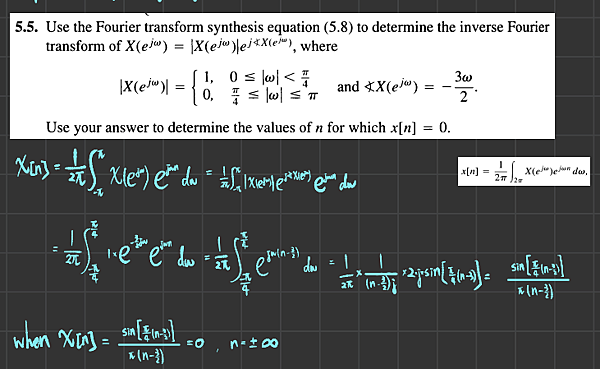
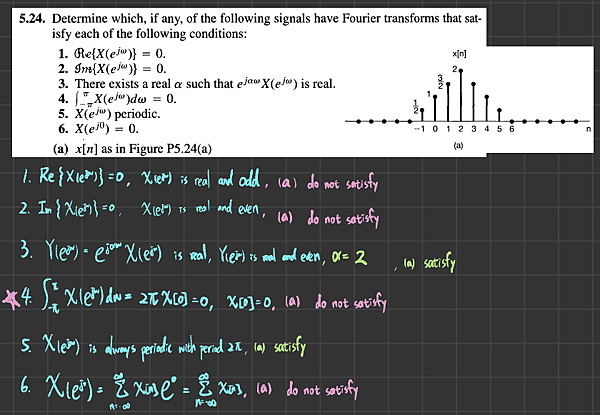
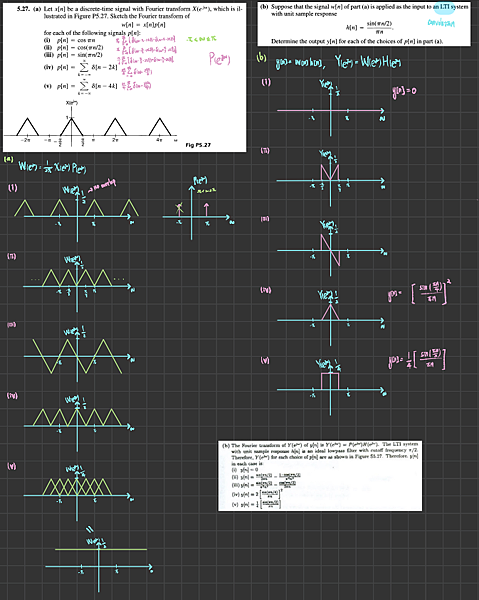
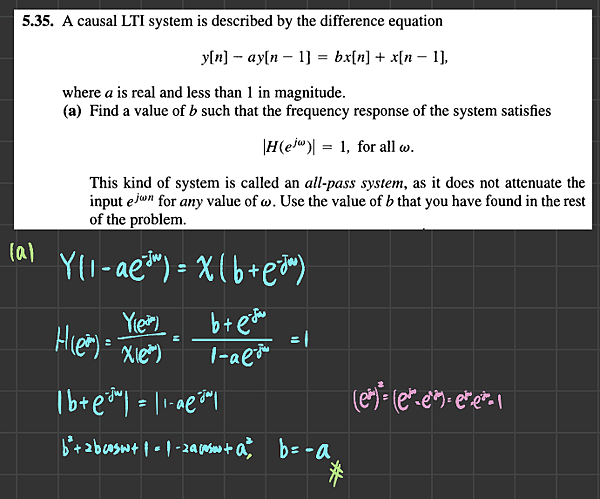
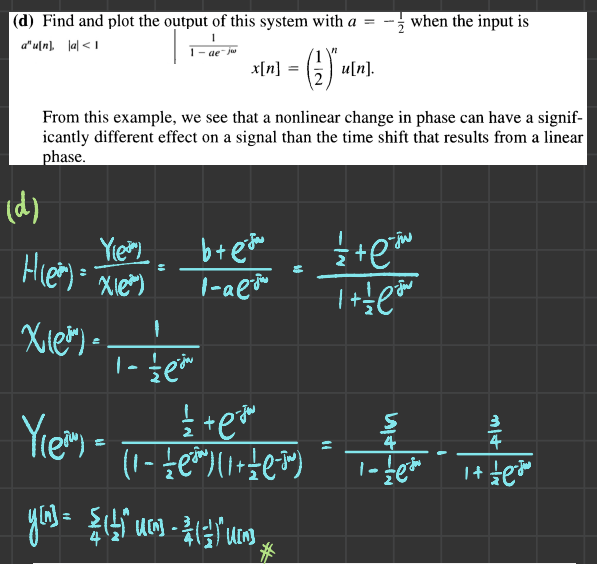
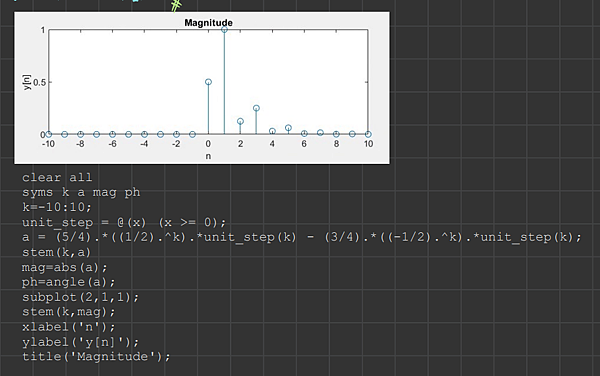
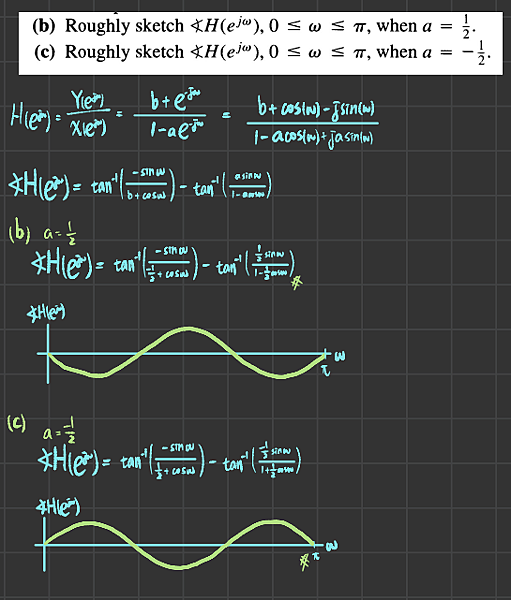
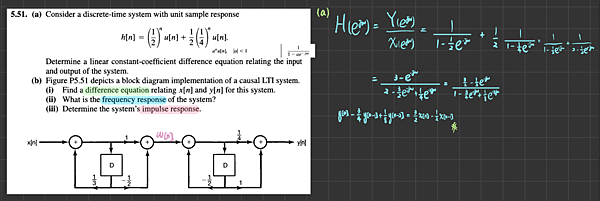
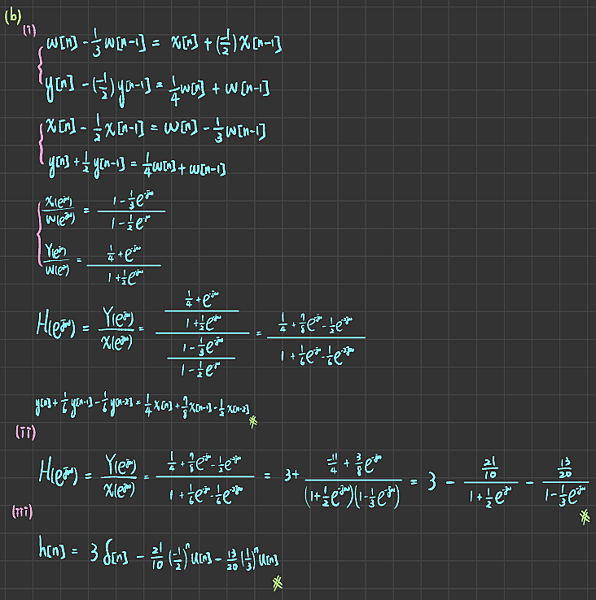
Use the Fourier transform synthesis equation (5.8) to determine the inverse Fourier 3W 2 and XX(e 0 Use your answer to determine the values of n for which x[n] = 0
Determine which, if any, of the following signals have Fourier transforms that satisfy each of the following conditions.
(a) Let x[n] be a discrete-time signal with Fourier transform X(ejω), which is illustrated in Figure P5.27. Sketch the Fourier transform of w[n]=x[n]p[n] for each of the following signals p[n] : (i) p[n]=cosπn (ii) p[n]=cos(πn/2) (iii) p[n]=sin(πn/2) (iv) p[n]=∑k=−∞∞δ[n−2k] (v) p[n]=∑k=−∞∞δ[n−4k] g P5.27 The Discrete-Time Fourier Transform Chap. 5 (b) Suppose that the signal w[n] of part (a) is applied as the input to an LTI system with unit sample response h[n]=πnsin(πn/2).
A causal LTI system is described by the difference equation y[n]=y[n−1]+y[n−2]+x[n−1]. (a) Find the system function H(z)=Y(z)/X(z) for this system. Plot the poles and zeros of H(z) and indicate the region of convergence. (b) Find the unit sample response of the system. (c) You should have found the system to be unstable. Find a stable (noncausal) unit sample response that satisfies the difference equation.
(a) Consider a discrete-time system with unit sample response Min) = () un + 3 (?) un). Determine a linear constant-coefficient difference equation relating the in and output of the system. (b) Figure P5.51 depicts a block diagram implementation of a causal LTI system (i) Find a difference equation relating x[n] and y[n] for this system. (ii) What is the frequency response of the system? (iii) Determine the system's impulse response. xin N Fig P5.51





 留言列表
留言列表


